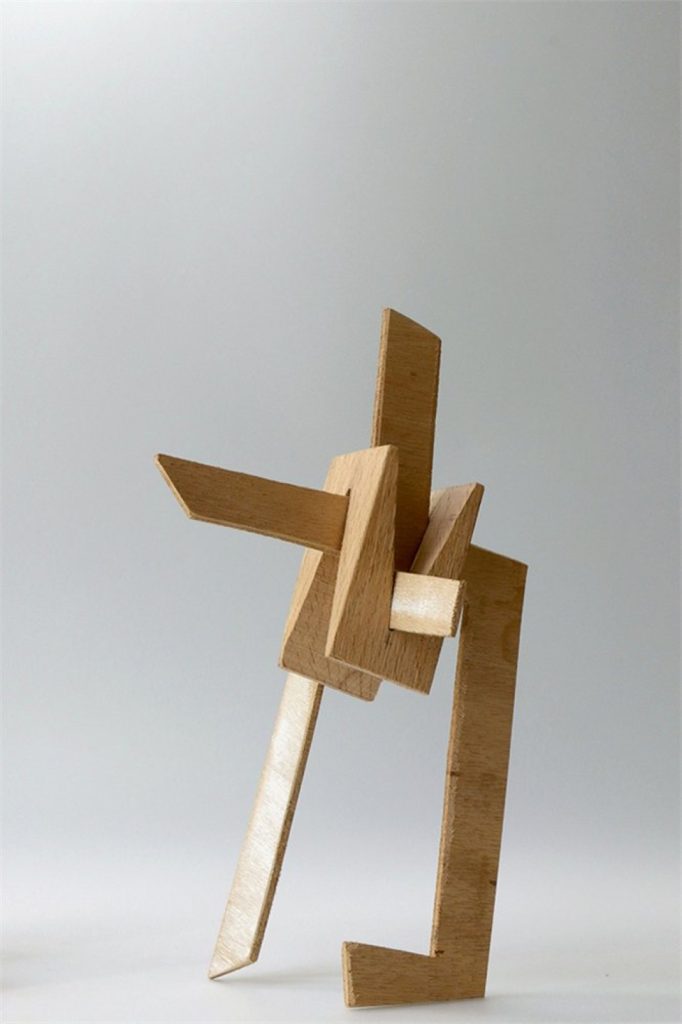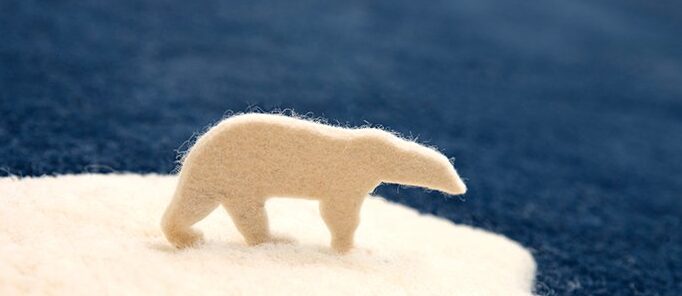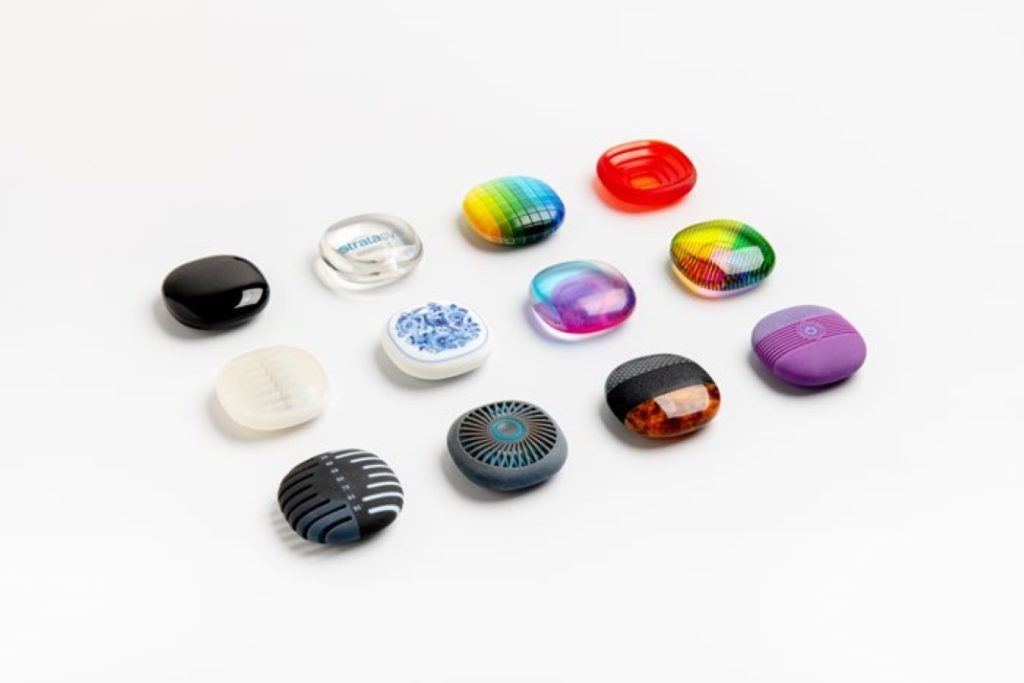Figurines – small-scale images of humans and animals -are the substance of Yaacov Kaufman’s exhibition, underlining his preoccupation with anthropomorphism of matter and objects.
A series of wooden pieces with slots into which sawed aluminum slices are inserted, endowing them with human features and turning them into a group of tiny figures, each one possessing a unique identity; rubber strips from the inner tube of a bicycle stretched over metal wire, combining different elements into a three-dimensional illustration of a group of people in motion; carved wooden rolling pins joined with bent aluminum surfaces make up statuettes of comically looking humans.
Figurines – small-scale images of humans and animals -are the substance of Yaacov Kaufman’s exhibition, underlining his preoccupation with anthropomorphism of matter and objects. There is an implied reference here to historical and archeological figurines dating back to prehistoric eras when they serves religious and ritualistic purposes, as well as to bourgeois ‘objets d’art’ that informed common, daily situations. There is also a dialogue with contemporary practices of figurines making and with Kaufman’s previous work on the same subject. Kaufman creates tiny figures that represent various acts through which IT becomes OBJECT.
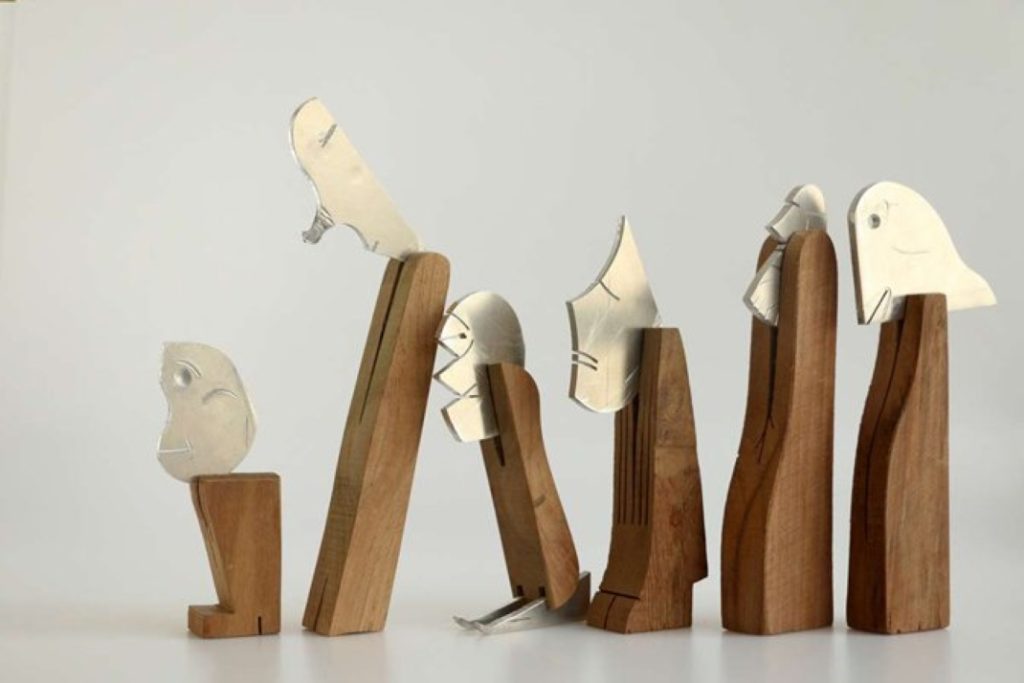
In the preface to his book “Silent Visitors” Kaufman writes: “When Early Man carved a pair of eyes on a pebble, that pebble was set apart from all other pebbles”. According to Heidegger, the act an artist imposes on “matter” invests it with significance, with a statement: it strips it of its practical attributes and turns it into “artistic act.” The acts that Kaufman imposes on the bits and pieces of raw material and objects that he collects from his work environment convert them from “things” into figurines that represent human images and commonplace situations. As Heidegger argues, the impracticality of the objects is supposed to impart “artistic status” to the little figures, but Kaufman treats them as products of design.
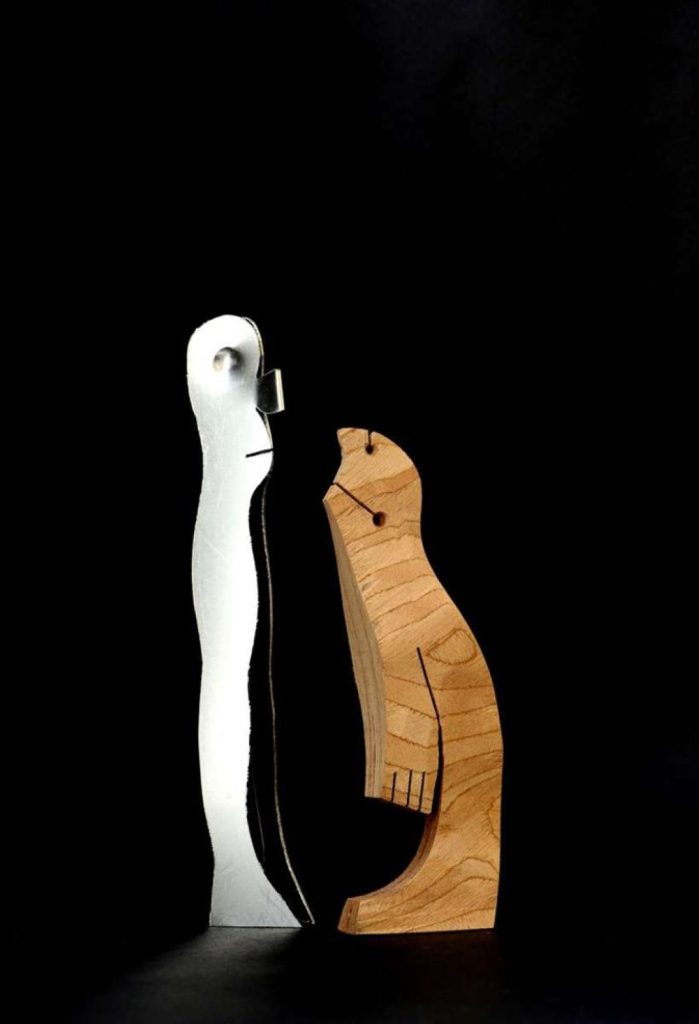
For Kaufman, the field of design is a field of nuances. He explains this distinction by the long processes that characterize industrial design, and by the changes in form, which may be as subtle as differences in angles. The two pieces of wood with a slot in which a nose has been inserted, stand side by side: they illustrate the stylistic nuances he is talking about. It is the same piece of wood, the same slot, the same nose, the same location. The difference comes from the plane where the action is taking place: almost the same thing, yet different. For the artist, each of these figures is a “feasibility model’ and it serves as a sketch through which he examines materials, connections and relationships among shapes and technologies, as a medium leading to processes of industrial design and development, and a platform for rethinking existing products.
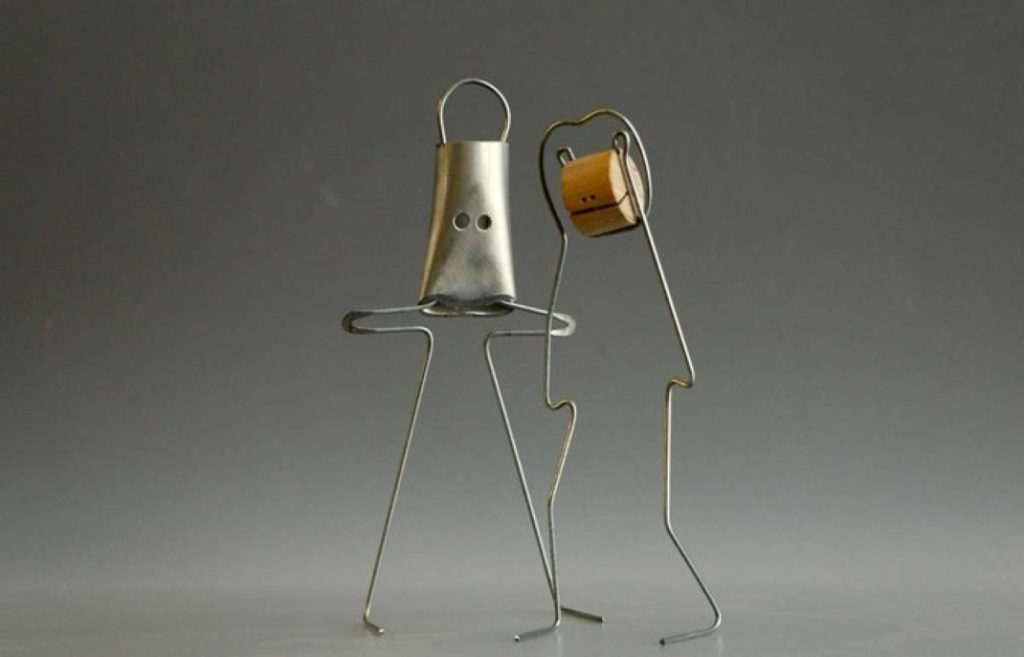
Kaufman’s work evokes a sense of dealing with “Ready-made”, but on closer examination, one realizes that the exhibits are not made of existing items. Kaufman reacts to existing objects, but in fact he creates and manufactures each one of them as part of a study of nuances, and he designs a unique identity for each item in the mass-produced environment. We see here a search for simplicity and abstraction, as well as an ability to distill “things” and make them into “objects” through minimal intervention that does not require complex technologies, making use of processes like cutting, sawing, polishing, piercing, bending, stretching, tying, enveloping, wrapping, threading etc. that drive the artistic creation. In some of his works he uses existing objects such as a clothing pin, hanger, rolling pin or book spine, as archetypes on which he elaborates. In others, he imposes anthropomorphism on inanimate objects as a means to study the characteristics of materials. While posing the question: when does a “thing” become a “figure”, he creates communities, tribes and families that share a common DNA, uniting them into groups with common denominators such as facial physiognomy, body structure, method of treating material, an apparatus that combines the disparate elements etc.
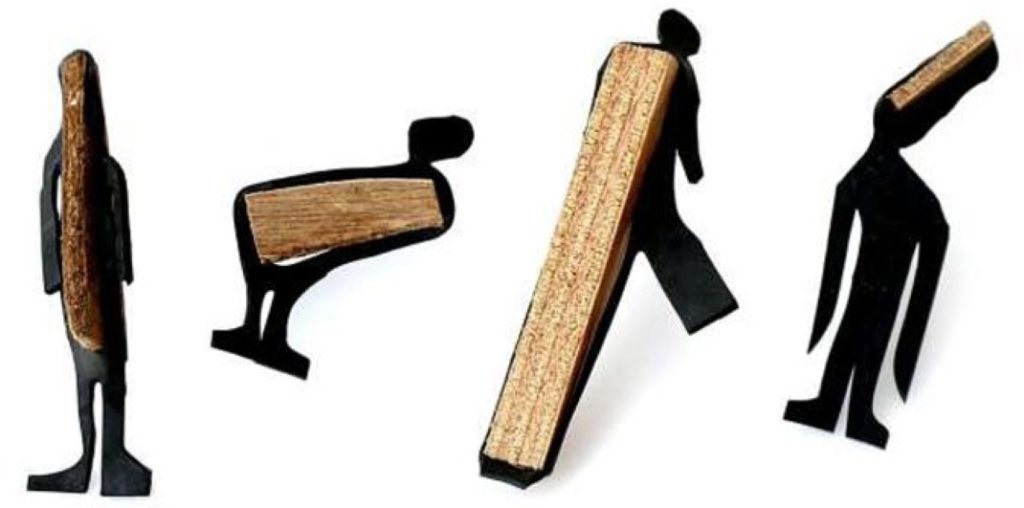
When examining the functional aspects the figures exhibit, one notices experimentation with various qualities of the material, such as scoring the wood to enhance pliability, threading objects through slots in order to broaden the base of the figure and give fulcrum and stability to the objects; examination of mechanism of motion; locking structures etc. The מחבר that forms the basis of the series of light fixtures “MultiX” that Kaufman designed for the Italian company Lumina in the Eighties finds its way to a cluster of figures, as part of the dialog between the industrial field where he operates and the art field (sculpture) where he began his career, thus alluding to the history of his own development. Figurines that combine mechanisms and מחברs from the realm of puppetry and tin toys evoke childhood memories that haunt the artist.
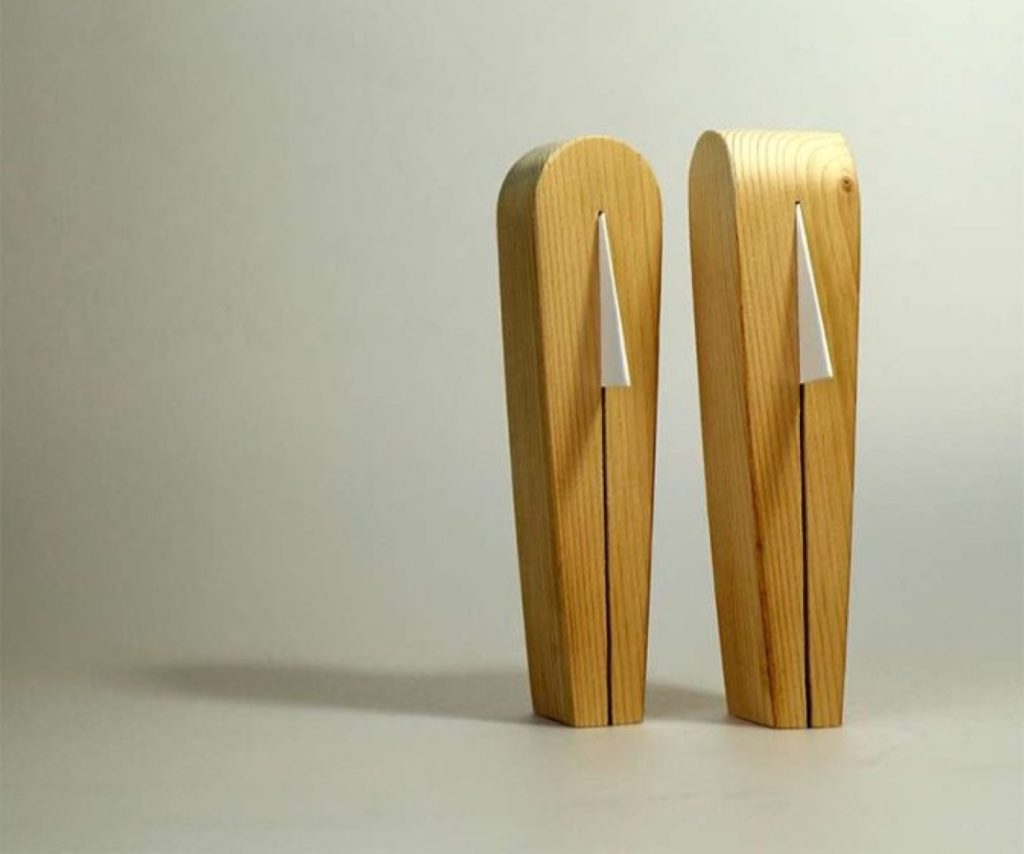
Kaufman’s figurines begin their lives as drawings, which he later transcribes into three-dimensional figures. The raw materials he uses: sheets of plywood, wood, cardboard, paper, metal wires, bits of aluminum etc. are often leftovers of materials used in one project then recycled to become the raw material of another. In addition, he selectively collects items and materials from his work environment when they suit his drawings. Kaufman’s personal history – having grown up in an era of penury and austerity – is reflected in his professional practices: he does not throw away anything, and he always searches bins and wastebaskets for potential material for his creative processes. He comments wryly that had he been younger, he would define his art as recycling or as ecological design.
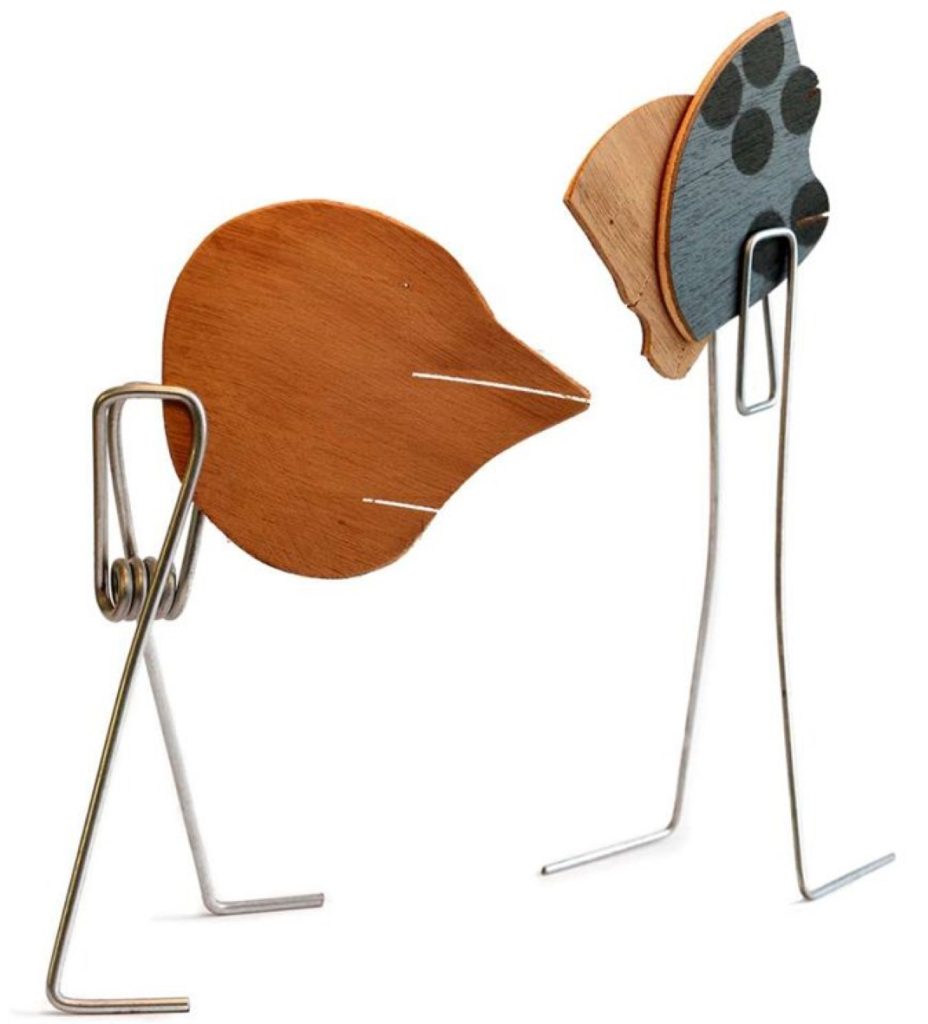
The Israeli cultural scene in which Kaufman operates is also present in his works, investing them with additional attributess of time and place. The concept of “Want of Matter” coined by Sara Breitberg-Semel to describe the minimalistic trend in Israeli art, is present here in the minimalism and “roughness” of the raw materials and finish. The ability to improvise, to convert odd bits and leftovers into objects of desire, a quality often attributed to Israeli designers, is here conveyed through a combination of simple elements that are transformed into images of poetic import. The cultural eclecticism that characterizes Israeli society in general manifests itself here by appropriating various idioms from various cultures. The physical location where Kaufman works is a dominant influence on his creation; ironically, the African motifs many of his figures exhibit -such as thick lips and other attributes identified with African culture – stem partly from the fact that his studio is located near the flea market, a repository of collections and heritages of Israelis hailing from Africa and from times when there were diplomatic relations with many African countries. The contents of those households found their way to the stalls of the market when their owners passed away.
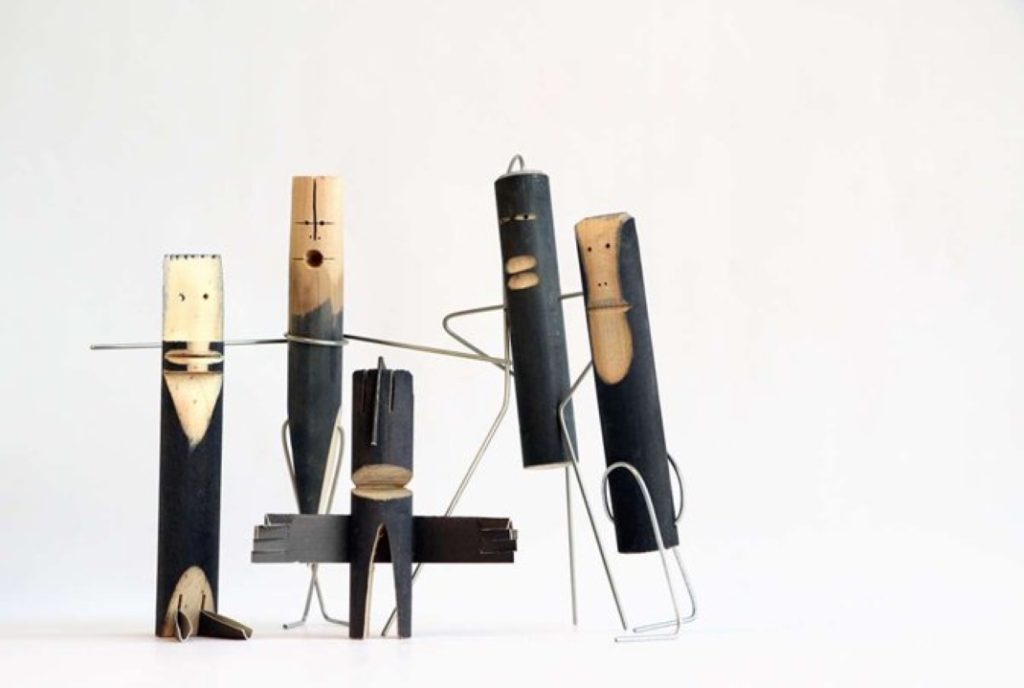
Observing the exhibited figurines one becomes cognizant of the connection between ancient and modern cultures: the image of the cross can be discerned in many of the figures: it epitomizes the human form and at the same time brings to mind the image of a 5000 BC goddess with folding arms. Slim stick figures, recognizable from African human figurines or from sculptures of Alberto Giacometti are also reminiscent of 3000-5000 BC historical figurines. Structural compositions achieved through inserting certain parts into others create a dialog with works by El Lissitzky. Three- dimensional drawings with metal wires that examine the tension between line and כתם as transition from two to three dimensions are reminiscent of works by Alexander Calder.
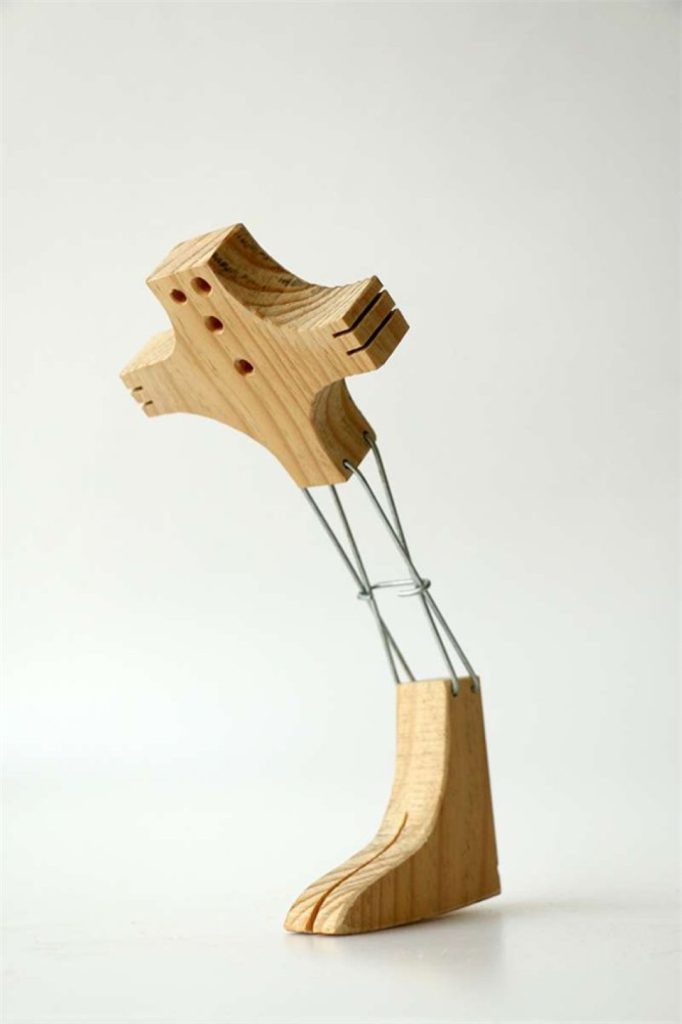
A cluster of hanging two-dimensional images made by laser cutting are a symbolic representation of the historical continuity of the concept of “figurines” that dates back to pre-historic cave drawings and ancient ceremonial statuettes. These hanging figures are a concrete rendition of drawings Kaufman made for his book “Silent Visitors:” they evoke ceremonial scenes found in a cave in Sicily, and project on the wall shadows that reverberate with echoes of distant and near pasts, linking them with the present day figurines.
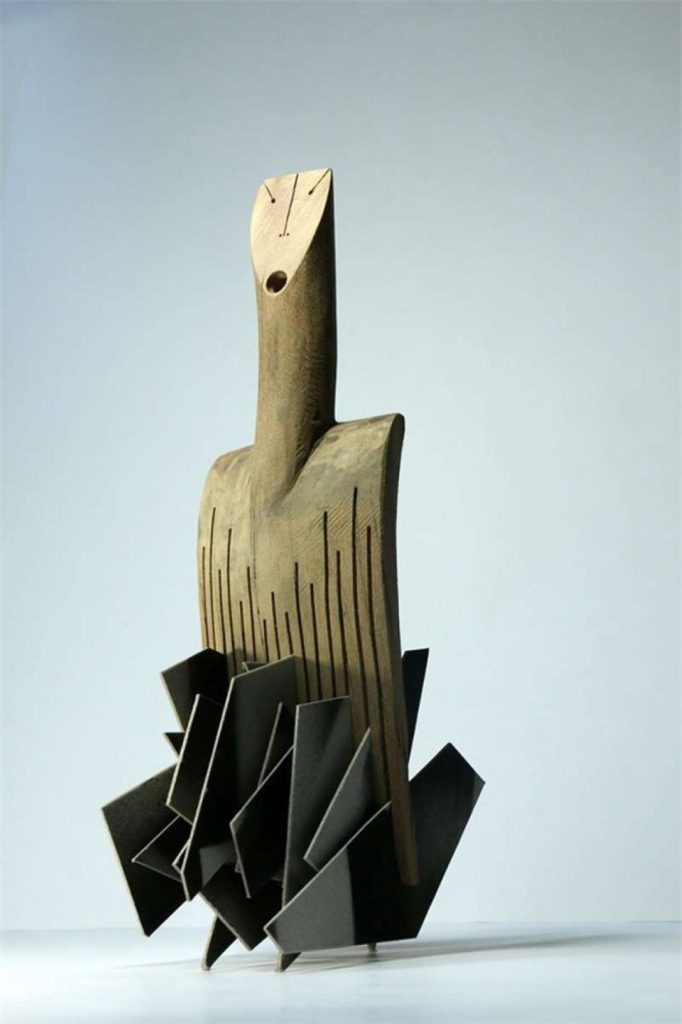
Kaufman’s figurines are the product of morphological and conceptual research. Presenting them in an exhibition as exposed installations חשוף מיצב ?? made out of hundreds of clustered items on a surface sets them apart from “figurines” housed in a glass cabinets or ethnographic museums, and frees them from their ritualistic or decorative context, turning our direct encounter with them into a humor-filled experience. Placing the figurines in juxtaposition to each other invests them with new meanings and makes them part of an imagined story where each figurine has its own body language and speaks with an idiosyncratic dialect. (Kaufman himself maintains that he hears a lot of Yiddish spoken among them).
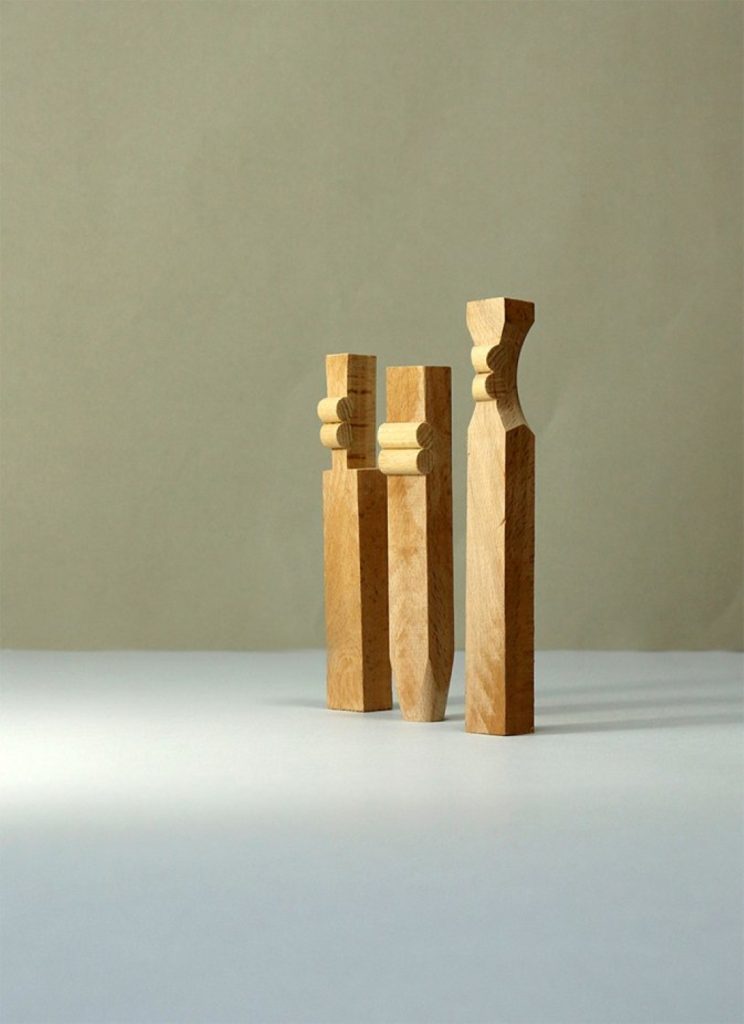
In the introduction to “The Hare with Amber Eyes,” a book about a historical journey to track down a collection of figurines, Netsuke, that the author Edmund de Waal inherits, he talks about the little statues as finished business on an unfinished subject. Kaufman’s figurine collection, on the other hand, can be seen as an unfinished business on an unfinished subject. The figurines, as an expression of processes by which a “thing” turns into a figure, have preoccupied Kaufman in the past, still preoccupy him in the present and will probably preoccupy him as long as he continues to create.
